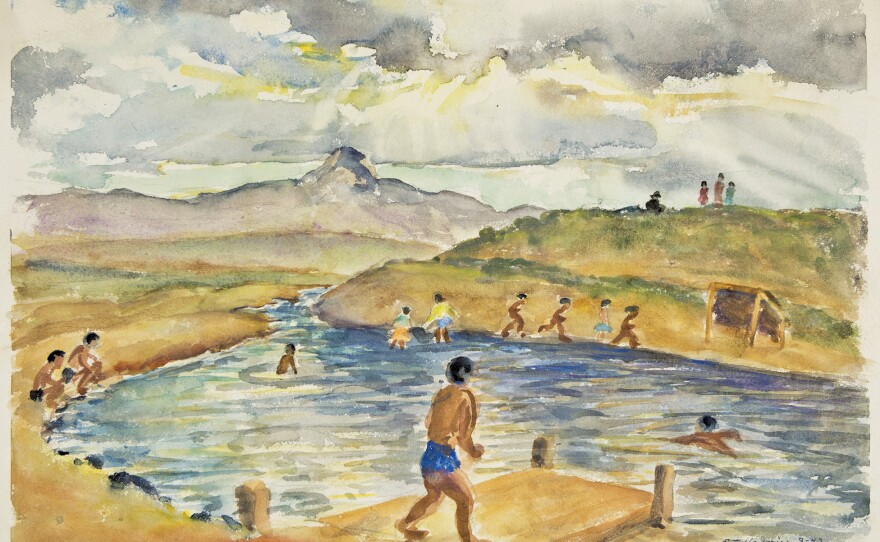Artist Estelle Ishigo was one of the few white women that went to a Wyoming Japanese-American internment camp. Estelle and her husband were imprisoned at Heart Mountain in 1942. During their three years at the camp, Estelle painted watercolors portraying the daily life. A new exhibit at Heart Mountain Interpretive Center called The Mountain Was Our Secret displays a collection of Estelle’s work.
Bacon Sakatani was 13 years old when he entered Heart Mountain. He remembers Estelle Ishigo clearly.
“She was middle age. She was nice looking. She had white hair so she stood out,” he recalled.
He said he was too young to partake in the art classes Estelle organized for the Heart Mountain incarcerees, but when he looks at her paintings now, it brings him back to the days at the camp.
“That’s it. It’s not showing a group of angry people. Just people doing what they were doing daily. It just brought that out, accepting what their life was in the camp,” said Sakatani.
The paintings portray how about 14,000 Japanese-Americans had to put up with living in horrible conditions while not understanding why they were there.
“Now here's a white woman who went to the camp with us and she realized right away that the whole thing was wrong,” said Sakatani.
From the very beginning, Estelle wanted to share her artwork so that the American public would see what Japanese-Americans were enduring.
Dakota Russell, the museum manager at the Heart Mountain Interpretive Center, said while Estelle was in the camp, she was contacted by Allan Eaton who was collecting artwork from people at the various camps.
“So Eaton is amassing this collection with the intent of writing a book and then taking a natural touring exhibition, said Russell.
Unfortunately, Eaton died before his aspirations could be completed. His artwork passed through family members and eventually ended up at a public auction in 2015.
“I was getting a lot of calls from the community, from people from the Heart Mountain Wyoming Foundation questioning what's the best way to handle the issue,” said Shirley Higuchi, the chair of the Heart Mountain Wyoming Foundation.
Higuchi said there was a strong belief among Japanese-Americans that the artwork of Estelle Ishigo and others should be brought back to Heart Mountain.
“This property that was created on the backs of illegal Japanese Americans and their parents in a prison camp that was illegal. So you figure, if work and art are created by the internees while they're being imprisoned, there's almost a moral and ethical obligation to make sure that you entrust that work in the best interest of the public,” said Higuchi.
And now, finally, after a hectic turn of events, Estelle’s work is back at Heart Mountain. Sakatani believes Estelle would be happy that her artwork is there. He once wondered what happened to Estelle, and he went looking for her.
“She was penniless. She was living in poverty. It was really a terrible sight. Both of her legs below her knees were amputated,” he said.
Sakatani kept in contact with Estelle and helped re-publish her book Lone Heart Mountain, which was filled with her watercolors and writings from that time, and he fulfilled her dying wish to spread her ashes out on Heart Mountain. But for now, Sakatani remembers the hard times at Heart Mountain through her paintings. The exhibit runs through the end of this year.









